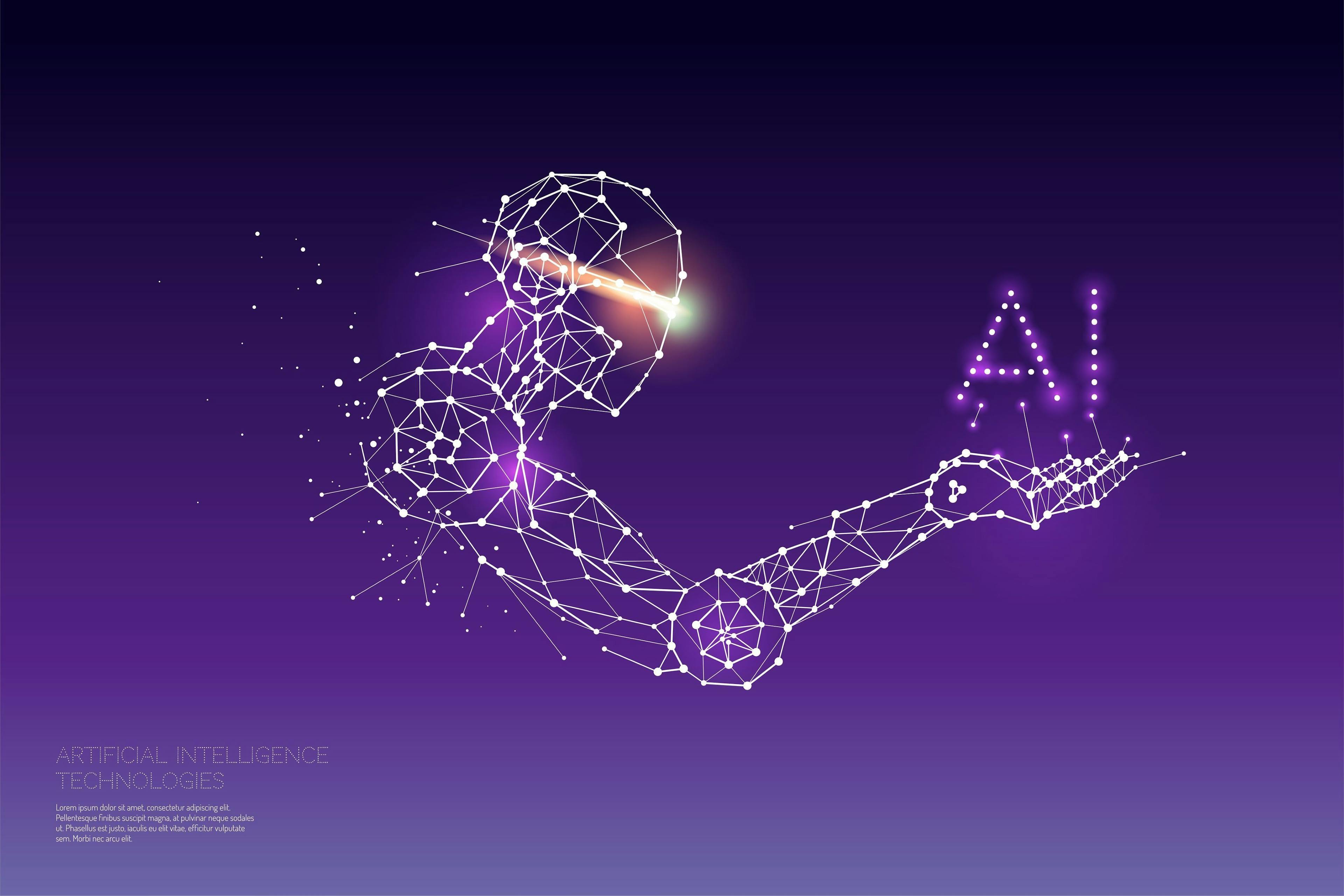Leverage Turing Intelligence capabilities to integrate AI into your operations, enhance automation, and optimize cloud migration for scalable impact.
Advance foundation model research and improve LLM reasoning, coding, and multimodal capabilities with Turing AGI Advancement.
Access a global network of elite AI professionals through Turing Jobs—vetted experts ready to accelerate your AI initiatives.
FOR DEVELOPERS
Why Does Artificial Intelligence Matter in Robotic Technology?

Robotics brings together computer science, engineering, mechanical design, electrical design, and electrical components that are programmed. Although robotics and artificial intelligence (AI) have distinctive goals and uses, the former is considered to be a subset of the latter. And with the aid of AI, robotic technology is now developing faster, more elegantly, and more effectively. In order to realize the impact of artificial intelligence in robotic technology, it’s essential to understand AI, robotics, and their distinctions. In this article, we will study both technologies and how AI impacts robotics.
Table of Contents
- 1. Difference between artificial intelligence and robotics
- 2. AI in robotic technology: what functions do AI robots have?
- 3. How do artificial intelligence and robots interact?
- 4. Types of artificial intelligence
- 4.1. Reactive
- 4.2. Limited memory
- 4.3. Theory of mind
- 4.4. Self-awareness
- 5. How AI is used in robotics
- 5.1. Computer vision
- 5.1.1. Tasks of computer vision
- 5.2. Natural language processing (NLP)
- 5.3. Edge computing
- 6. Applications of AI-driven robotics
- 6.1. Robotics in healthcare
- 6.2. Robotics in agriculture
- 6.3. Robotics in automotive processes
- 6.4. Robotics in warehousing
- 6.5. Robotics in the military
Difference between artificial intelligence and robotics
AI is a branch of computer science and engineering that aids in building smart computers that behave like people by giving them the ability to see, comprehend, control, and remember human-like behaviors. Reactive machines, limited memory, theory of mind, and self-awareness are the four categories of AI. We will discuss these in the following sections.
Robotics is a branch of engineering that involves the creation of machines to perform specific tasks. These tasks are repetitive and do not need additional ‘intelligence’; hence, the use of AI is not necessary. However, AI comes into play when robots are required to perform complex tasks. In fact, in recent years, AI has become a common presence in robotics.
AI in robotic technology: what functions do AI robots have?
When a robot incorporates AI algorithms, it is able to act independently after a "training" or "trial-and-error" phase and does not require commands to make decisions. The robot can learn, solve problems, understand concepts, reason, and respond visually, thanks to machine learning.
The majority of robots are not intelligent but today, businesses look for intelligent automation as well as process automation. There is a definite trend towards mobile, autonomous robots that can intelligently gather, process, and manage data in order to make the best decisions for manufacturing or production. In many situations, a robot that can simply carry weight is no longer sufficient.
A robot's power comes from its capacity for independent thought, and here is where robotics and artificial intelligence technology might mesh. Robots are being sought after by businesses more and more as a way to transcend beyond automation and take on difficult, high-level activities.
AI may assist a robot in a variety of ways, from successfully navigating its environment to identifying items nearby or helping humans with jobs like drywall installation, bricklaying, and robotic surgery.
How do artificial intelligence and robots interact?
Ever since 1956, when John McCarthy first used the term "artificial intelligence", there has been controversy. From perceived threats to humanity to bias and privacy concerns, AI has its fair share of detractors. Even so, there’s no denying its presence in the modern world.
Robots with artificial intelligence have computer vision that allows them to navigate, assess their environment, and decide how to react. Through the process of machine learning, which is also a component of computer programming and AI, robots learn how to carry out their tasks from humans.
Types of artificial intelligence
Different types of AI are utilized, depending on the purpose and the tasks that the robot must complete. These include reactive, limited, theory of minds, and self-aware systems. While the first two are in use, the others exist only as concepts. However, with AI fast evolving, it’s not so far-fetched to assume that that future may not be an impossibility.

Reactive
Reactive machines react to stimuli. They cannot learn, form ‘memories’, or use previous experiences to take action on the requirements at hand. Despite being the most basic type of AI, they are still in use. A good example is spam filters.
Limited memory
Machines with limited memory have the functionality of reactive machines but with the additional capability of being able to learn from historical data. Many of the applications we’re familiar with today come under this type of AI. Self-driving cars are an example. Humanoid robots that can perceive their environment and interact with it are also equipped with this kind of AI.
Theory of mind
Theory of mind is AI that we have not achieved yet. As the name suggests, it refers to the capability of machines to make decisions on par with that of humans. They would be able to discern the emotions of the people they interact with; in essence, understand humans.
Self-awareness
Consider this the final stage of evolution of AI. Machines would have an intelligence equal to that of humans. They would be self-aware and be able to think. In other words, they would be nearly human and it would be very difficult to differentiate them from us.
How AI is used in robotics

The following examples illustrate how AI is used in robotic technology.
Computer vision
As briefly discussed, robots can see because of computer vision technology, which is an application of AI. They are taught to recognise and decipher information from picture and video data through computer vision. The technology processes visual information and then takes appropriate action. Every industry, including the health and entertainment sectors, rely heavily on computer vision.
Tasks of computer vision
Computer vision performs several key tasks, such as those below.
- OCR: Optical character reader (OCR ) is software that helps convert scanned documents into editable text.
- Face detection: This helps find and identify human faces in digital images.
- Object recognition: A subfield of computer vision, AI and machine learning (ML), this aims to recognize and identify the most prominent objects in a digital image or video with AI models.
- Pose estimation: This predicts and tracks a person’s or object’s location.
Natural language processing (NLP)
Human-robot communication is made possible through a particular branch of artificial intelligence known as natural language processing (NLP). The technology enables a robot to comprehend and mimic human speech. For instance, voice orders are given to AI robots via NLP which they then respond to appropriately. Notable examples of NLP are voice assistants like Siri and Alexa.
Edge computing
AI requires a lot of data and computation, making it an ideal fit for edge computing. Edge computing, meanwhile, benefits AI by assisting with the technological issues posed by applications that use AI. It is particularly well-positioned to assist with the following:
1. Reduced data transfer to the central cloud: In order to detect trends and provide accurate recommendations, machine learning algorithms must ingest huge amounts of data. Rather than sending everything to the cloud, more processing can take place at the edge, lowering backhaul costs. This is especially important for use cases that need high-definition video analysis, where streaming to the cloud would require massive bandwidth.
2. Real-time decision-making: This is necessary (with minimal latency) when machine learning is used to initiate real-time actions. Edge computing can enable these judgments to be made near the source of the data and the resultant actions to be triggered at the edge, as opposed to transmitting all raw data to a distant cloud for centralized processing.
3. Local data processing and storage: Edge computing allows for the local storage of sensitive or private information, such as customer location data, as opposed to the cloud. Only aggregated datasets and important insights need to be transmitted to the cloud when executing AI at the edge. All other data stays local.
Applications of AI-driven robotics
Owing to modern robots’ precision and efficiency, they have a wide range of applications in almost all industries.
Robotics in healthcare
Robots are transforming the healthcare domain in several ways. They can help doctors conduct operations more accurately, can be used as prosthetic limbs, can provide therapy to patients, etc. The possibilities are numerous. One example is the da Vinci surgical system that is used to help surgeons carry out complex surgeries relating to the heart, head, neck, and other sensitive areas. It does this by translating a doctor’s hand movements at the console in order to perform minimally invasive procedures.
Robotics in agriculture
Many repetitive tasks in agriculture, including planting, weeding, harvesting, etc., are a waste of time and resources for farmers and are better managed by robots. An example is the ecoRobotix, a robot that can be employed in farms to get rid of weeds. It is solar-powered and uses an advanced camera system to target and spray weeds. Another example is the use of AI robots for tasks like fruit and vegetable harvesting, pesticide application, and plant health monitoring.
Robotics in automotive processes
The automotive industry has used robots for more than 50 years in assembly lines of the manufacturing process. Today, automakers are investigating applications of robotics very aggressively for assembly, welding, parts removal, parts transfer, and machine tending
Robotics in warehousing
For e-commerce businesses to transport their products to clients or migrate from one location to another, warehouses require additional staff to manually manage the enormous volume of inventory. Robots greatly minimize this time and effort. They are mostly used in warehouses to carry out tasks including order picking, inventory shifting, and inventory cancellation. They are taught to manage such inventories and are capable of safely transporting them from one location to another, hence decreasing the need for human labor in such repetitive activities.
Robotics in the military
Robots are used in the military as drones to control the watch on the enemy or as armed systems for attack. Some popular examples are the unmanned ground vehicle (UGV), MAARS (Modular Advanced Armed Robotic System), and the tactical combat robot, DOGO. MAARS resembles a tank and is equipped with tear gas, laser dazzlers, audio deterrents, motion detectors, and many more features. DOGO, on the other hand, is armed with a 9 mm Glock, eight video cameras, and a remote controlled pepper spray module, among other things.
We have seen the significance of AI in robotics in this article. In today's world, robotics is crucial to many aspects of life, including healthcare, the military, exploration, entertainment, business, and customer service. Considering their widespread use, robots have a bright future as they evolve and continue to offer advanced assistance across a vast range of industries.
Author

Turing
Author is a seasoned writer with a reputation for crafting highly engaging, well-researched, and useful content that is widely read by many of today's skilled programmers and developers.
Frequently Asked Questions

Press

Blog
